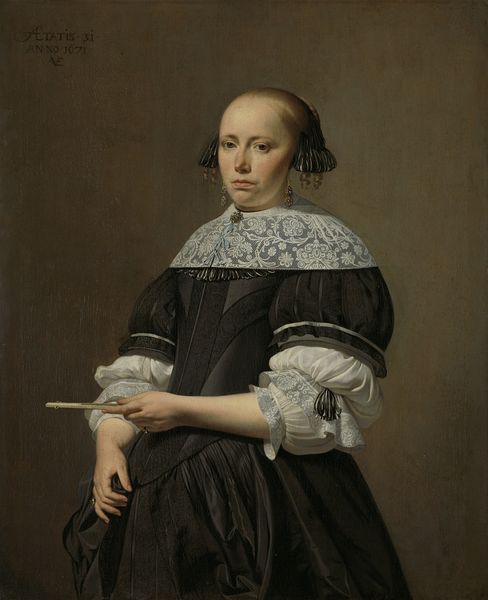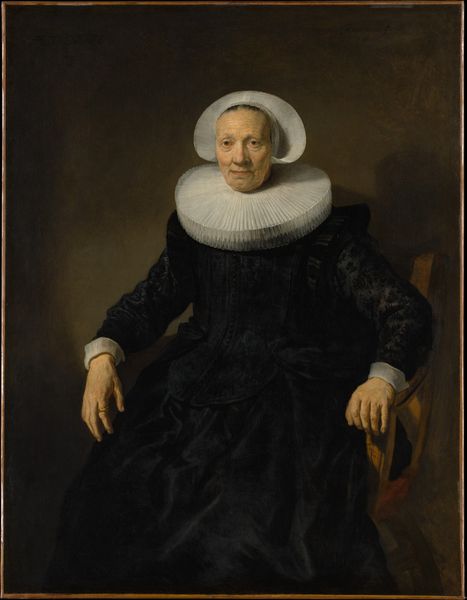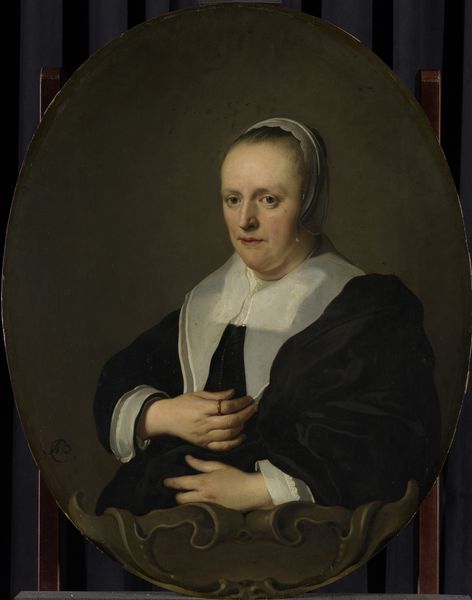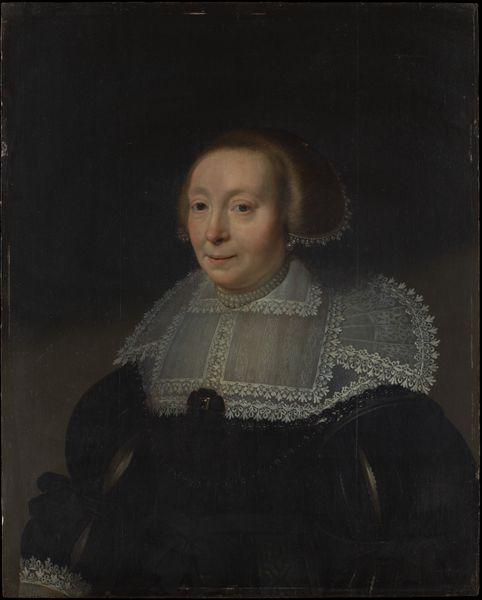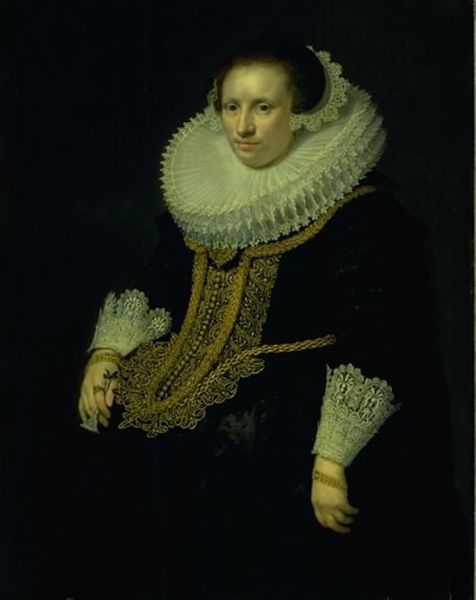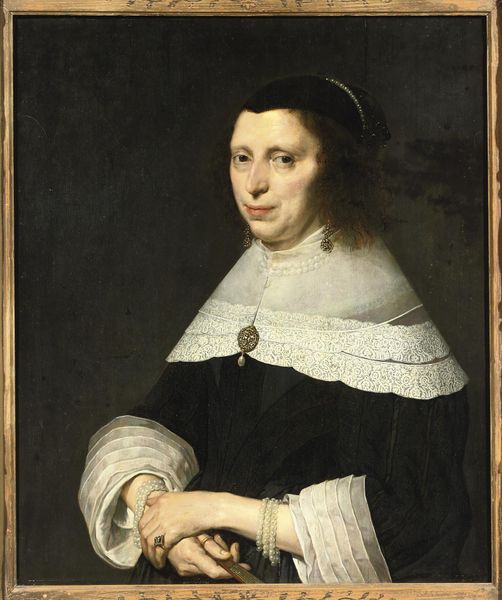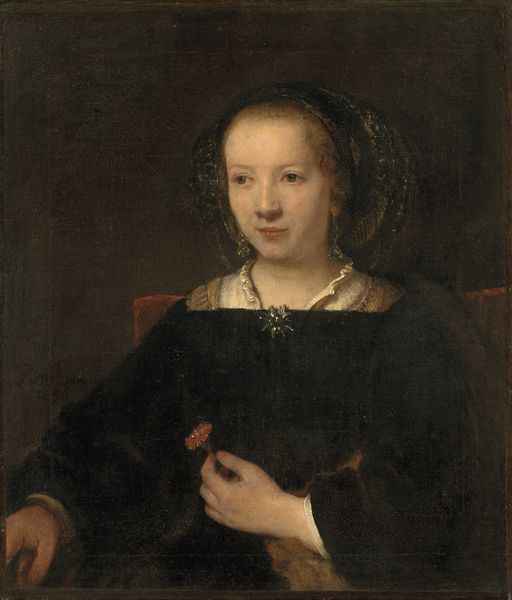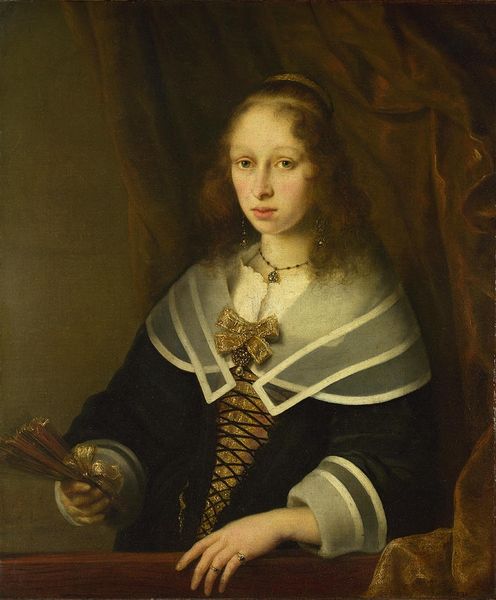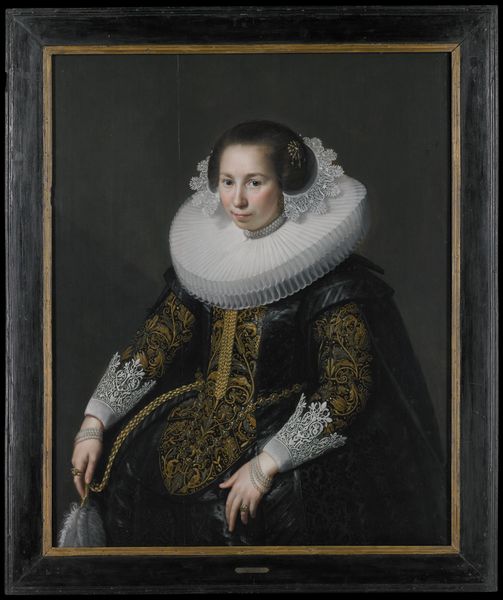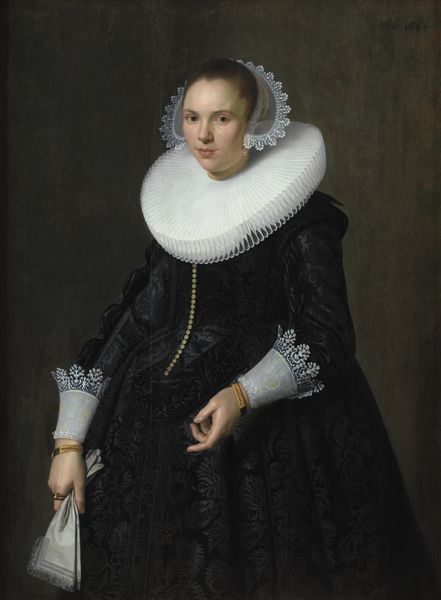
painting, oil-paint
#
portrait
#
dutch-golden-age
#
painting
#
oil-paint
#
history-painting
#
realism
Dimensions: height 97 cm, width 75 cm, depth 5.5 cm
Copyright: Rijks Museum: Open Domain
Editor: Here we have Johannes Verspronck's "Portrait of Maria van Strijp" from 1652. The Rijksmuseum tells us it's oil on canvas. I’m immediately struck by her guarded expression and the formality of the pose. What layers do you see beneath the surface? Curator: The gaze is key, isn’t it? Direct, but almost… resigned? Consider the Dutch Golden Age: a time of immense economic prosperity fueled, in part, by colonial exploitation. Portraits like these weren’t just records of appearance, they were displays of status, coded with symbols of wealth and virtue. How does Maria's clothing – the restrained dark fabric and the pearls - speak to the values circulating during that time? Editor: It definitely feels like a careful performance. But the more I look, the more I wonder about what wasn't considered appropriate to portray, about the women whose stories were left untold. I'm intrigued by what seems to be implied about her world versus her role in it. Curator: Precisely. Consider the limitations placed upon women. Her worth, even her identity, was tied to her family, her marriage. The very act of commissioning this portrait was likely orchestrated by male relatives, and so even her expression became another articulation of family status, not an expression of personal desire. Is there a rebellion or negotiation occurring in her bearing? Editor: That's a chilling perspective. Viewing this through that lens… I’m now seeing that the “simplicity” I initially read may just be about conveying wealth in a specific social language. Curator: Exactly! And by engaging with the silences in these histories, we get a glimpse of that. These weren't simply depictions of "beauty." These were highly politicized objects of cultural power. Editor: I’ll definitely look at other portraits with new eyes after this. Curator: I hope so. Art becomes far more meaningful when viewed as a tool for expressing social narratives.
Comments
rijksmuseum about 2 years ago
⋮
Verspronck painted not only Maria van Strijp and her husband, but also her mother and her brother-in-law. He usually portrayed his patrons standing. In this case, however, Maria sits sideways on a chair with its back to the viewer. He borrowed this playful device from portraits by Frans Hals.
Join the conversation
Join millions of artists and users on Artera today and experience the ultimate creative platform.
